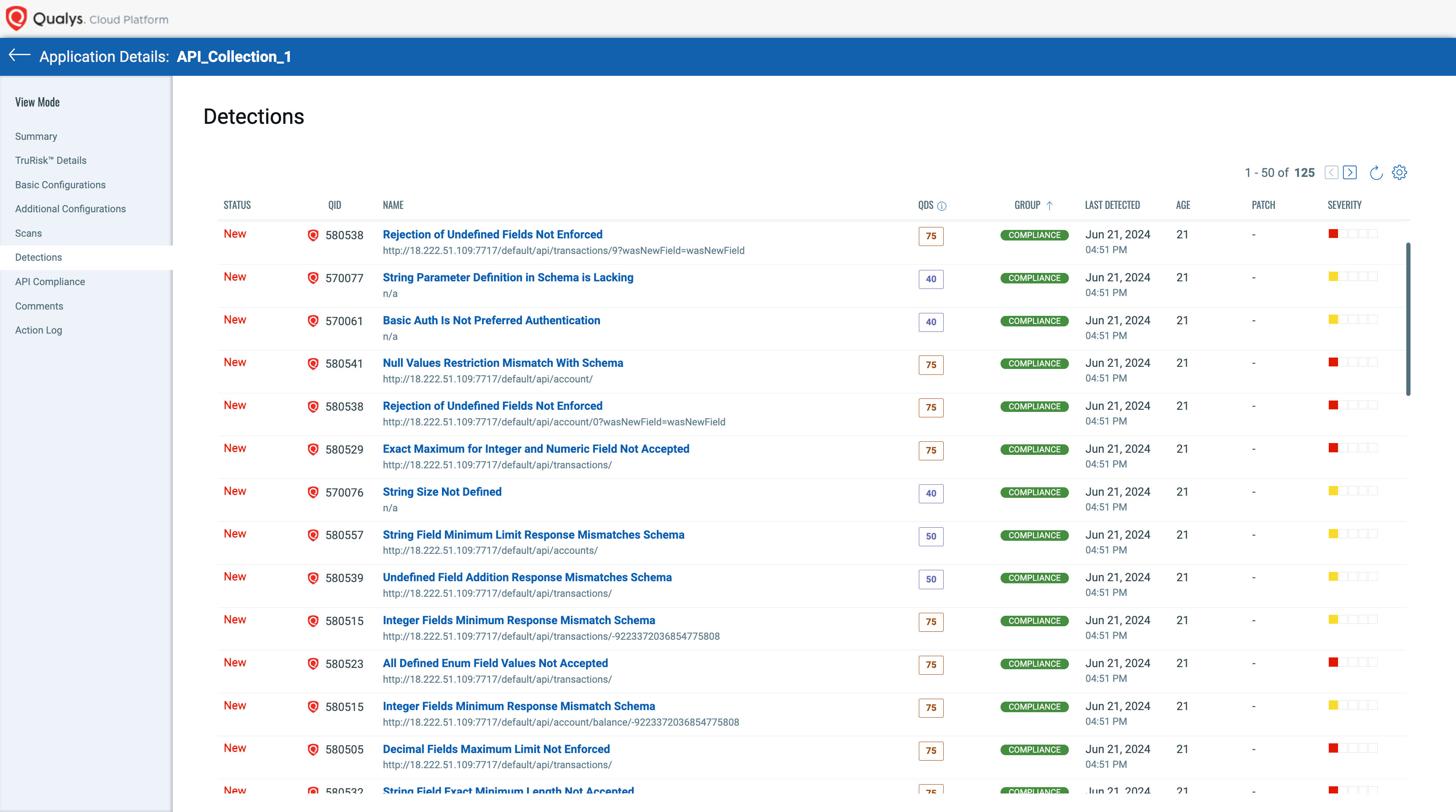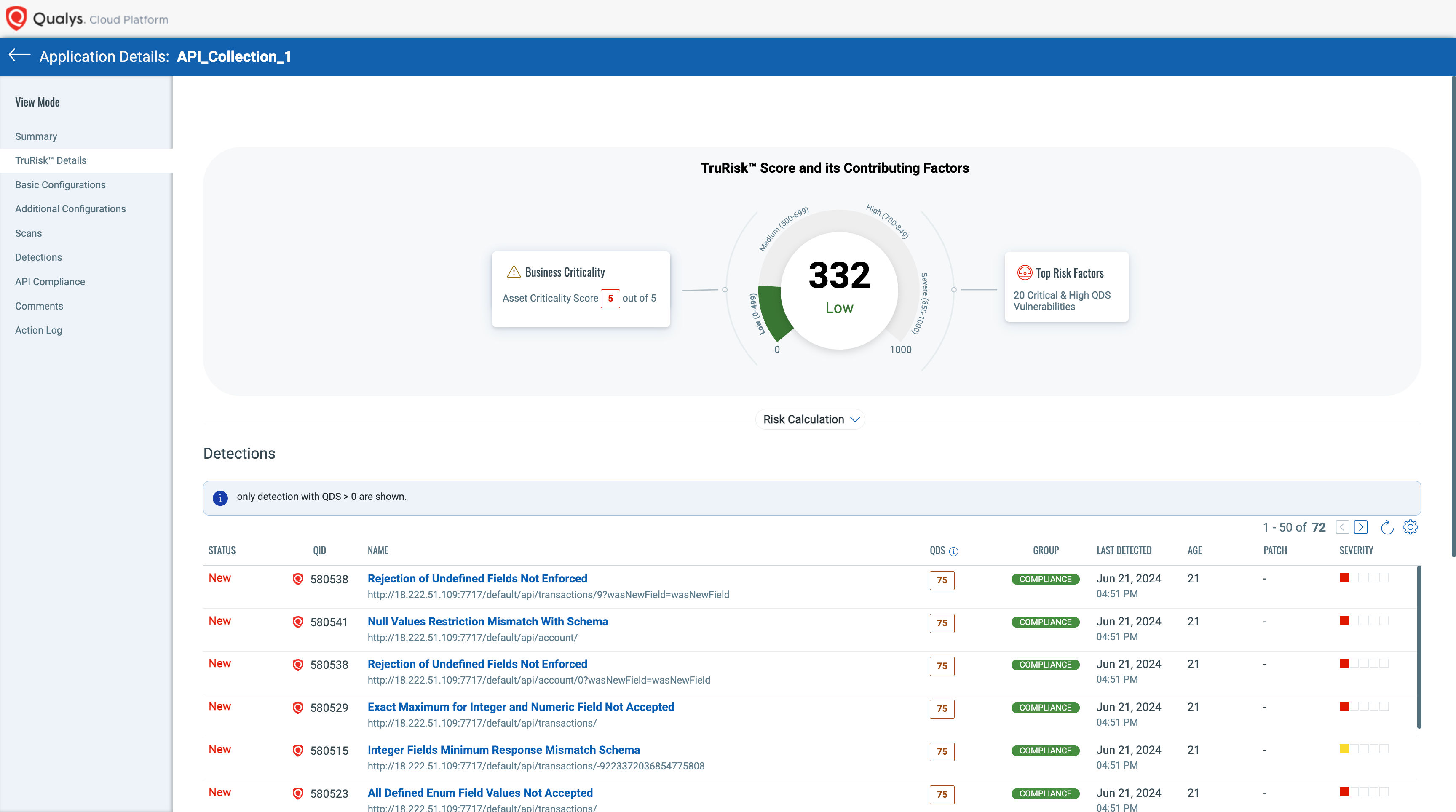Secure Your APIs and Minimize Attack Risks with AI-powered API Security in Qualys Web Application Scanning (WAS)

The rise of APIs presents both opportunities and challenges in today’s hyperconnected digital world. APIs are integral to digital transformation initiatives across industries. The latest data indicates that over 83% of web traffic now comprises API traffic, highlighting their critical role in modern web applications using microservices, cloud, and hybrid environments. However, this also underscores the vulnerabilities that accompany their widespread adoption. This rapid increase in API usage expands the attack surface, making effective API security solutions more crucial than ever.
Moreover, regulations like the General Data Protection Regulation (GDPR) in Europe and the California Consumer Privacy Act (CCPA) in California mandate stringent data protection measures, with non-compliance resulting in hefty fines. For instance, GDPR violations can incur fines of up to 4% of annual global turnover or €20 million, whichever is higher. These regulations drive the need for robust API security to ensure compliance and protect sensitive data.
However, securing APIs for the modern application development world comes with its own set of challenges. Discovering all APIs across various environments—hybrid, multi-cloud, and others—remains a significant challenge due to the complexity and diversity of modern IT architectures. Forrester’s 2024 predictions highlight the difficulty of managing API security without comprehensive visibility into the API inventory, given that an average enterprise has over 300 APIs.
Protecting APIs against automated and advanced threats without compromising functionality or performance is a major concern. The expanding number of APIs and the lack of real-time data on their security posture complicate vulnerability detection and prioritization.
Complying with OpenAPI standards is critical for API interoperability and security, but it involves navigating challenges, from technical complexities and security considerations to organizational adoption and tool integration.
On the other end of the spectrum, early detection & remediation of API security risks without slowing development processes is vital. Implementing shift-left security practices and automating security testing within CI/CD pipelines are crucial yet challenging tasks.
Overcoming the Challenges of a Fragmented API Security Posture
Many organizations use a variety of security tools, such as SAST, DAST, SCA, or point solutions for API security that often operate in isolation, without a unified platform to integrate their findings. Moreover, the absence of integration between these tools leads to a fragmented view of the application security posture and results in uncoordinated efforts and gaps in security coverage. Similarly, SAST & DAST tools offer limited coverage for API-specific issues and focus predominantly on code vulnerabilities.
Mainly, these solutions fail to extend their assessment to the runtime or environmental threats where APIs operate and provide visibility into the vulnerabilities of the underlying infrastructure hosting these APIs, leaving significant security gaps at the network and host levels.
Most enterprises use these different security tools with varied algorithms and detection mechanisms, which can produce conflicting results, increasing the likelihood of false positives. Moreover, the sheer number of alerts generated by these tools doesn’t help, leading to alert fatigue, where critical issues may be overlooked or ignored.
Typically, security testing is an afterthought conducted late in the development cycle before deployment. When critical vulnerabilities are discovered at the last minute, it leaves insufficient time for remediation. Using shift-left practices, by embedding security testing into the CI/CD pipeline early in development, vulnerabilities can be identified and addressed earlier, reducing the risk of last-minute surprises.
On top of that, correlating data across various tools requires context, such as understanding how a vulnerability in one component might impact another. Without this context, the significance of vulnerabilities can be misunderstood, leading to mis-prioritization of remediation efforts.
To mitigate these issues, organizations should adopt integrated security platforms, emphasize shift-left practices, and ensure comprehensive data correlation across the security testing spectrum.
AI-Powered QUalys API Security Scanning for Comprehensive Protection
To address these challenges, Qualys is launching an enhanced Web Application Scanning (WAS) with API security that leverages AI-powered scanning and deep learning-based web malware detection to secure web apps and APIs across the entire attack surface, including on-premises web servers, databases, hybrid, multi-cloud environments, API gateways, containerized architectures, and microservices.
- Measure API risks across all attack surfaces with a unified view of API security by discovering & monitoring every API asset across diverse environments, enabling better decision-making and faster response times.
- Communicate API risks like OWASP API Top 10 vulnerabilities & drift from OpenAPI specs with real-time threat detection and response, minimizing the risk window and enhancing overall security.
- Eliminate API risks with integrated workflows supporting Shift-Left & Shift-Right practices, bridging the gap between IT and security teams, promoting seamless collaboration, and improving operational efficiency.
Key Features of Qualys API Security
- Comprehensive API discovery and inventory management
Qualys WAS with API Security automatically identifies and catalogs all APIs within an organization’s network, including internal, external, undocumented, rogue, and shadow APIs. Whether APIs are deployed in multi-cloud environments (AWS, Azure), containerized architectures (Kubernetes), or API gateways (Apigee, Mulesoft), Qualys’ continuous discovery ensures an updated inventory across all platforms, preventing unauthorized access points and shadow APIs.

- API vulnerability testing & AI-powered scanning
Qualys provides comprehensive API vulnerability testing using 200+ prebuilt signatures to detect API-specific security vulnerabilities, including those listed in the OWASP API Top 10, such as rate limiting, authentication & authorization issues, PII collection, and sensitive data exposure. Moreover, for large applications, Qualys combines the power of deep learning and AI-assisted clustering to perform efficient vulnerability scans. This smart clustering mechanism targets critical areas, achieving a 96% detection rate with an 80% reduction in scan time.

- API compliance monitoring
Qualys performs both active and passive compliance monitoring to identify and address any drift or inconsistencies in API implementation and documentation in adherence to the OpenAPI Specification (OAS v3). Clear, standardized API documentation, in adherence to OAS, ensures that shared documentation is easily understood by recipients, simplifies security assessments and enforcement, and enhances the accuracy of code, benefiting both automated tools and human developers. Qualys also continuously monitors APIs for compliance with industry standards such as PCI-DSS, GDPR, and HIPAA to ensure that APIs remain compliant with evolving regulations, avoiding potential fines and enhancing data protection.

- API risk prioritization with TruRisk™
Qualys leverages its proprietary TruRisk™ scoring system, which integrates multiple factors such as severity, exploitability, business context, and asset criticality to prioritize risks based on overall business impact, ensuring that the most critical vulnerabilities are addressed first. It also categorizes risks based on the OWASP API Top 10, helping organizations focus on the most prevalent and severe API security threats.

- Seamless integration with Shift-Left and Shift-Right workflows
Qualys integrates seamlessly with existing CI/CD tools (e.g., Bamboo, TeamCity, Github, Jenkins, Azure DevOps) and IT ticketing systems (e.g., Jira, ServiceNow), supporting both shift-left and shift-right security practices. This facilitates automated security testing and real-time threat detection and response without disrupting development workflows. By bridging the gaps between IT and security teams, Qualys ensures smoother operational transitions, improving API security practices and reducing the risk window.

Join the Qualys API Security Beta Program
We invite you to be part of our Beta launch and experience firsthand the capabilities of Qualys API Security. By joining the Beta program, you will gain early access to cutting-edge security features designed to protect your APIs against the most critical threats.
Join Qualys API Security Beta program today for 30 days!
If you are an existing customer, please reach out to your Technical Account Manager (TAM) to find out more.
New to Qualys? Sign up for a no-cost, 30-day trial of Qualys Web Application Scanning (WAS)